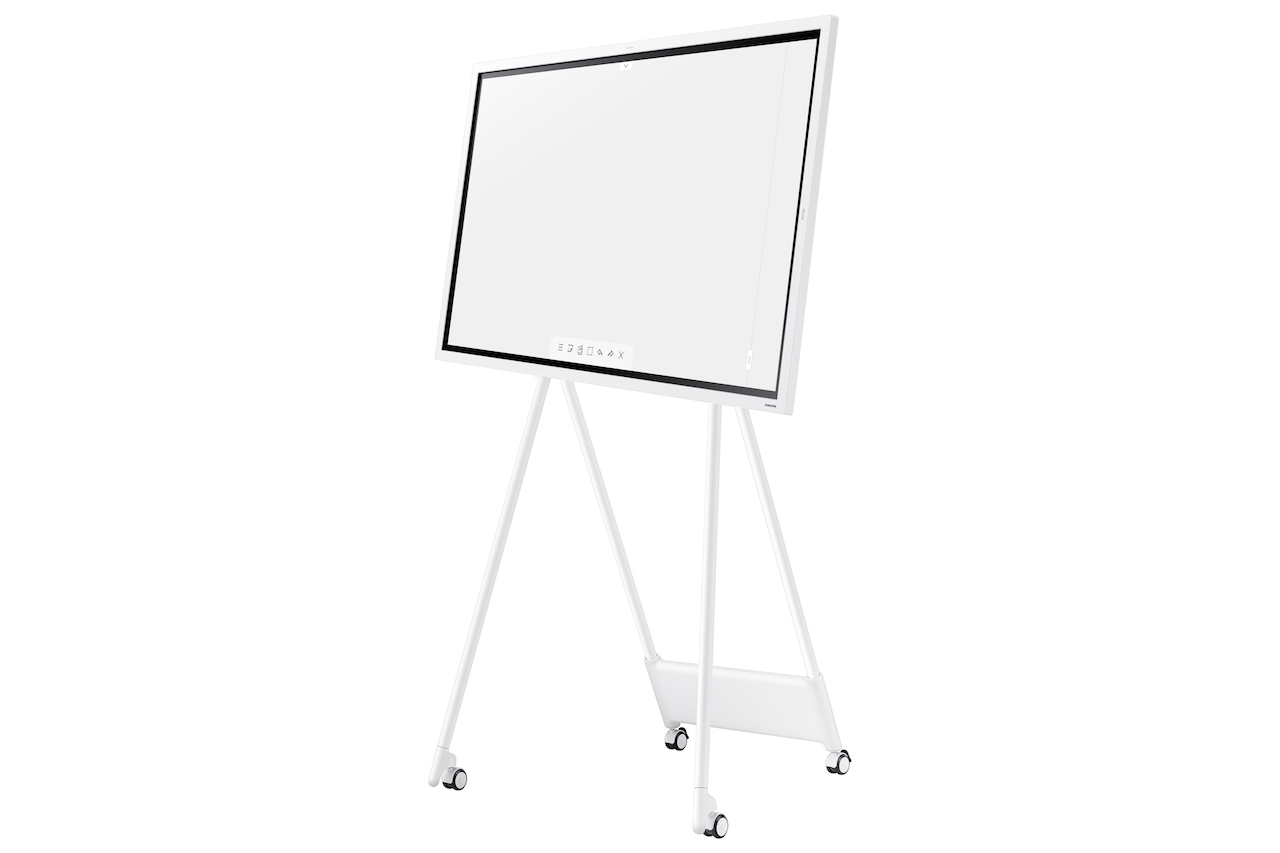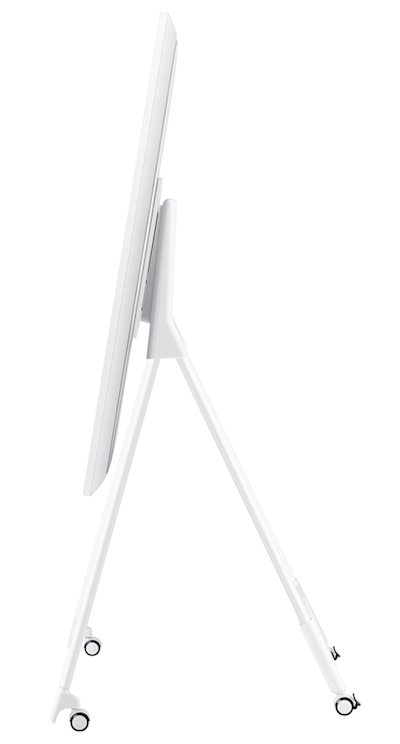As a technology manager, I am always interested in new and existing technology. When given the opportunity to play with the Samsung Flip 2, I was really intrigued. I’ve used other digital whiteboards before and wanted to know what would make this one stand out.
Launched last November as a follow-up to the company’s successful entry into the interactive flat panel (IFP) market, the Flip 2 aims to further Samsung’s share of this growing product category. Does it live up to expectations?
Related: Product Review: Jabra PanaCast
First Look
Upon unboxing the Samsung Flip 2 and checking it out, I was immediately impressed with the build quality of the unit. It was effortless and easy to assemble, but I did require the assistance of a colleague to mount the display. Once we completed the setup, I was eager to see the extent of its capabilities. I found the screen size to be just right at 55 inches (it also comes in a 65-inch version), as it did not feel overwhelming while allowing for a reasonable viewing distance. The stand made it easy to move and it was very stable. I also enjoyed the wire management components that were included in both the display and the stand. In my initial attempt exploring the settings, I found that there was a familiarity component to the display menu that made it comfortable and accessible.
The screen itself is very responsive to contact. While using the stylus, I noticed how it picked up your input without being oversensitive to the point it draws things you didn’t intend, as some lower-quality equipment might. I also like the ability to switch between portrait and landscape orientation depending on your needs. The screen can also serve as a second display, which I find to be extremely useful, especially if you’d like to mirror or extend presentations on your laptop or other devices.

The Flip 2 can be a collaborative tool in our smaller to medium conference rooms and huddle spaces. In large conference rooms, it can be used to push content to other displays. Essentially, the content that is usually presented on a small display can be amplified to the larger screen, allowing everyone to comfortably view the content or the presentation.Through its multiple functions—digital whiteboard, presentation display, and a web browser—the Flip 2 can also be used as a signage display for events. It is a very versatile product for various uses in a university setting.
While testing, I ran into multiple professors on campus who were also intrigued by the Flip 2 and wanted to test it out for themselves. They shared plans on how they would use it in their classrooms to teach their students in their respective subjects, including but not limited to cybersecurity and fine arts. The marketing team also showed interest in reviewing the product, as it can be used as a display board for brainstorming sessions, creating artwork, editing copy, and agency presentations. I look forward to seeing how our students, faculty, and staff employ the Flip 2 in innovative ways beyond testing.
Noteworthy Features
he following are the features that left an impression on me as a new user.
HDMI connectivity with a computer: I like that I was able to use the pen or my fingers to interact with my desktop. This is especially useful when using software to edit photos, as it allows you to interact with the image at full resolution. I also appreciate the ability to change the monitor from horizontal to vertical orientation when switching between landscape and portrait images.

USB connections: The USB ports allow for exporting and importing files as well as connecting peripherals like a camera. For example, I used my laptop to display our spreadsheets and underlined certain areas for our work-study students, pointing out key areas to guide their focus. It was also pretty speedy overall, no matter which feature was used. It felt intuitive.
Drawing: The drawing tools are incredible, as they not only allow you to write or draw whatever you want in a variety of brush thicknesses and colors, but it also includes several enhancements and effects to create visually appealing imagery. Drawing using different angles was smooth using the Flip screen. The digital pen is convenient and straightforward to convey thoughts, and the three brush size choices provide flexibility without overwhelming you with options. The board also allows for blending with oil brushes, like you would on a real canvas.
Additionally, you have the ability to take screenshots of a previous canvas, create a new one, and merge them, in the event that you want to use an item from a previous session. I like the various inputs to other devices such as a tablet or laptop, and that it allows you to draw on top of those screenshots. I spent a good deal of time using the writing feature, because I feel it is the most significant selling point. Being able to pass notes easily or be selective was a nice touch.
Overall, I liked the Samsung Flip 2 and feel it possesses the potential to revolutionize learning environments, but it would be equally at home in business meetings or just about any other application that requires an interactive display. With an MSRP of around $2,100, it’s also a great value, and I would happily recommend it to any organization looking to enhance its presentation capabilities.
Emil Delgado is the director of client services at St. Peter’s University in Jersey City, NJ.
